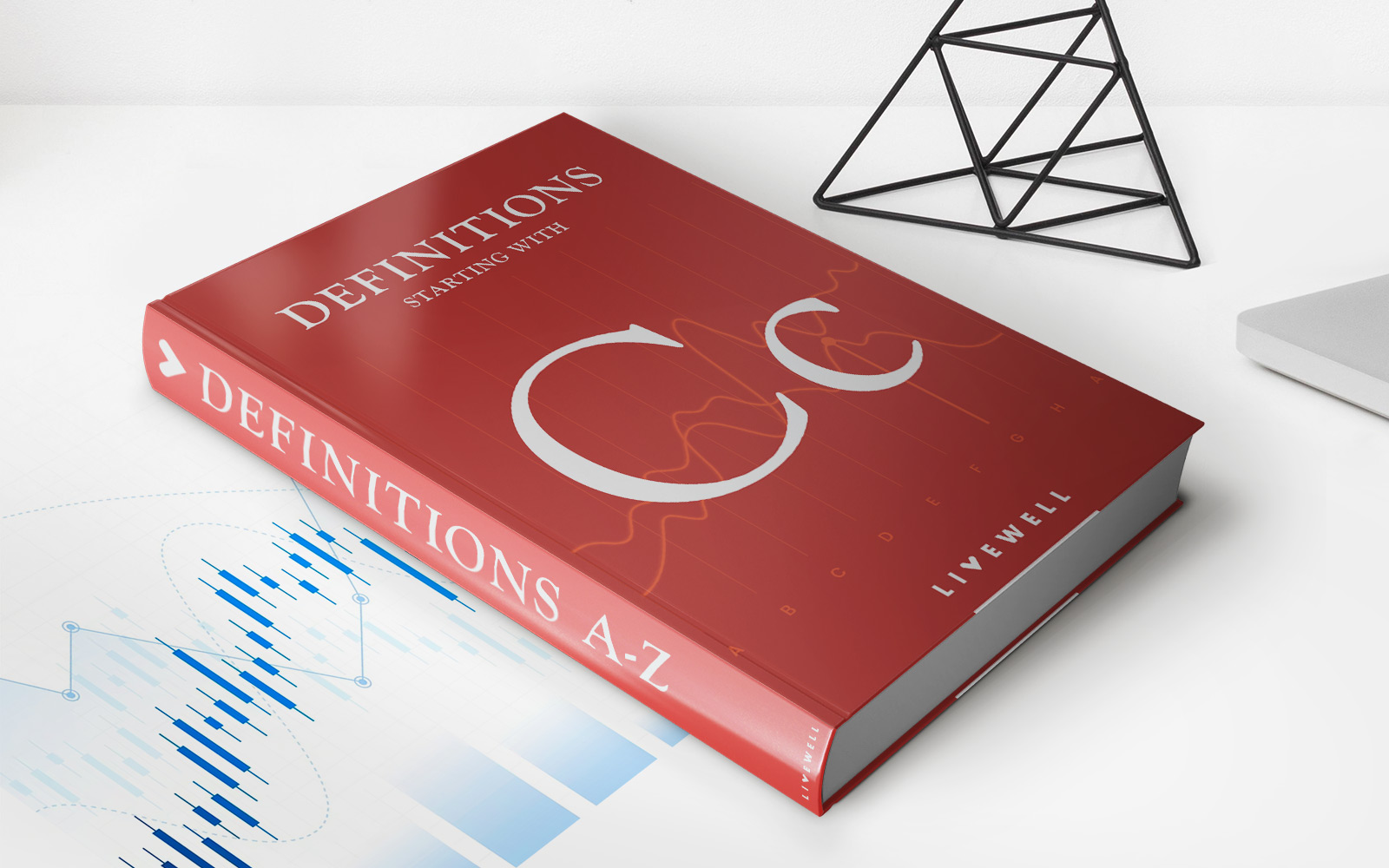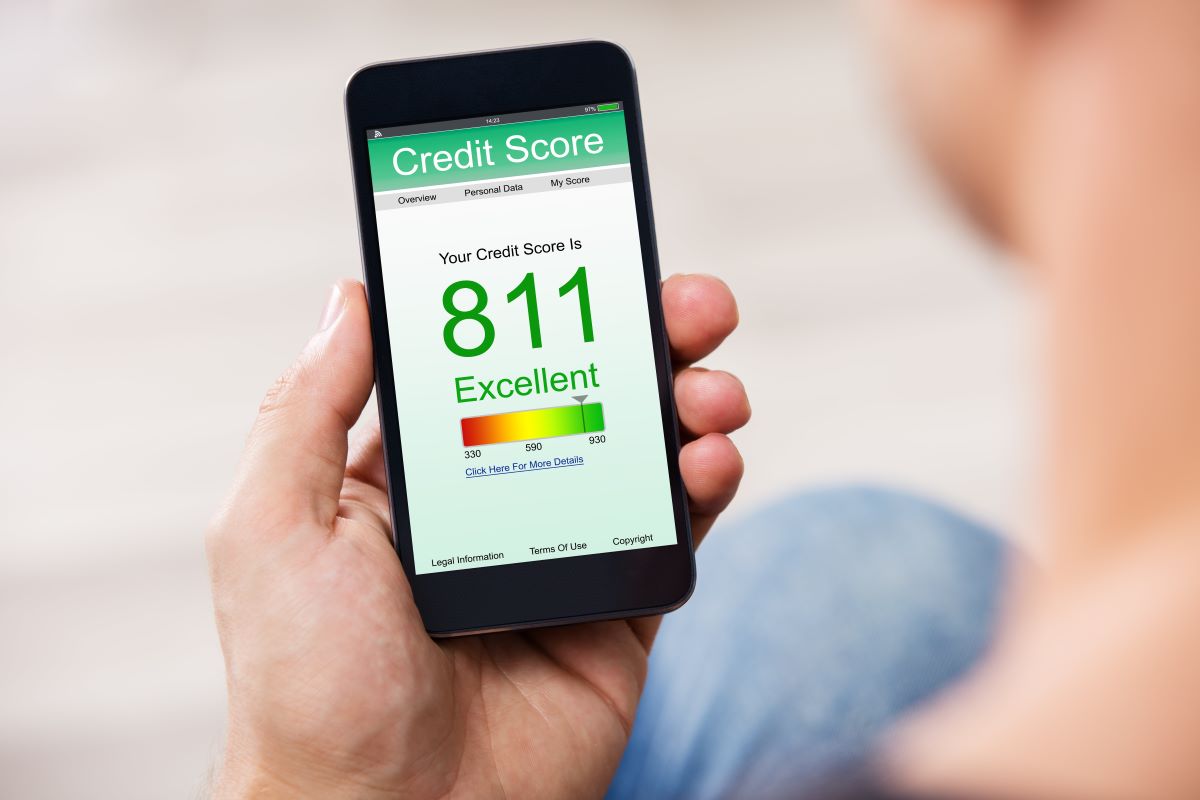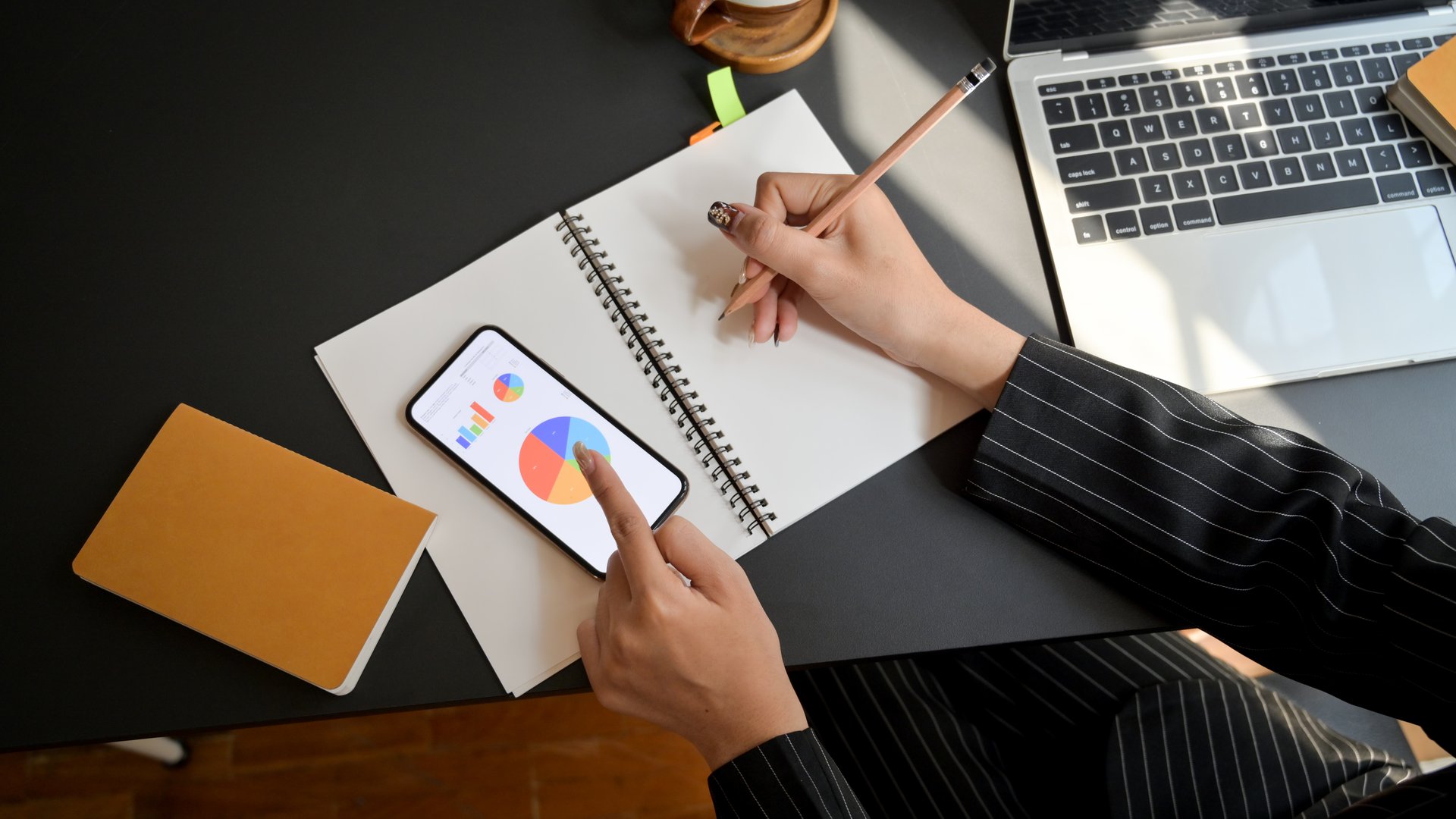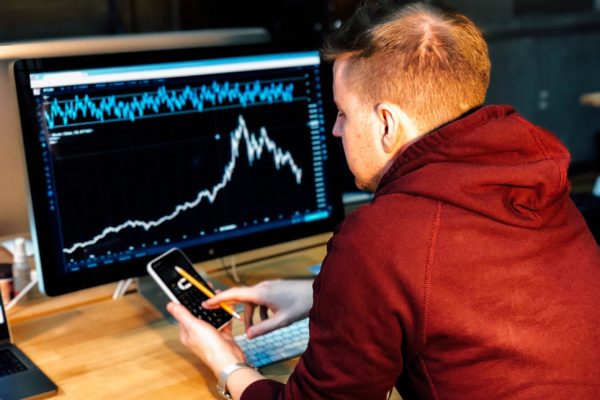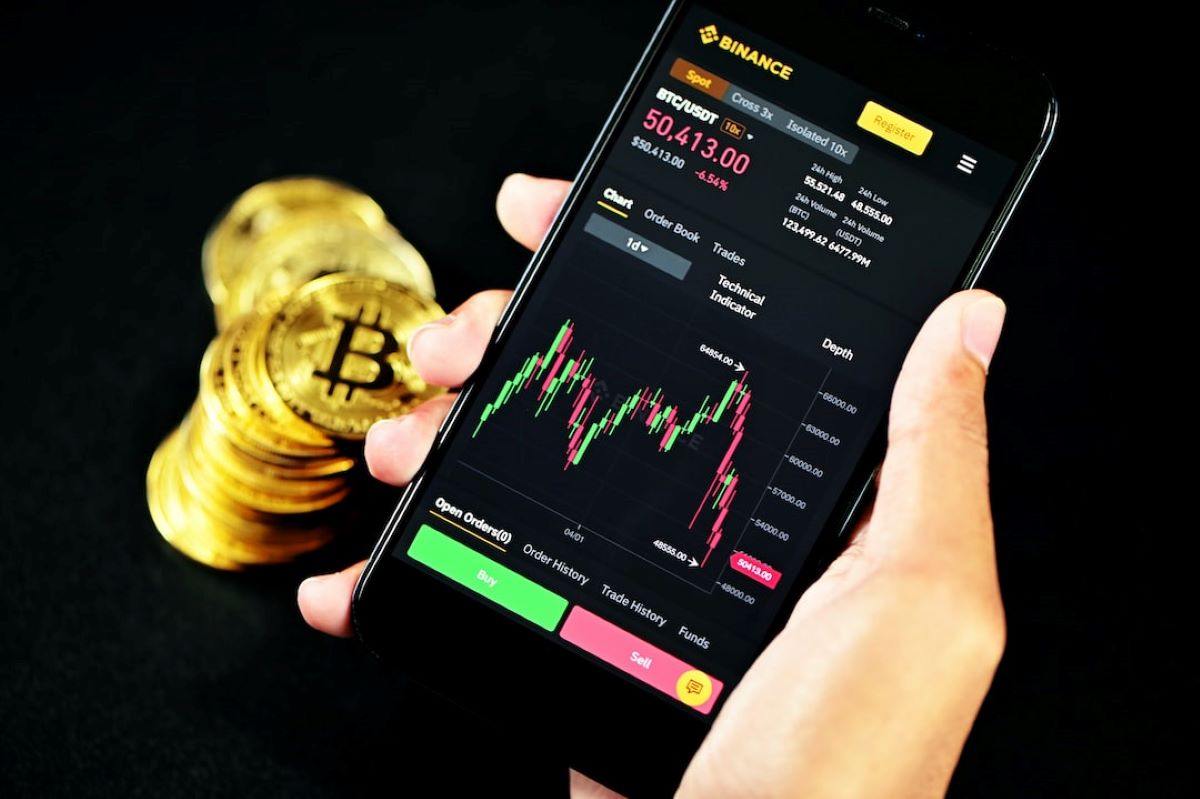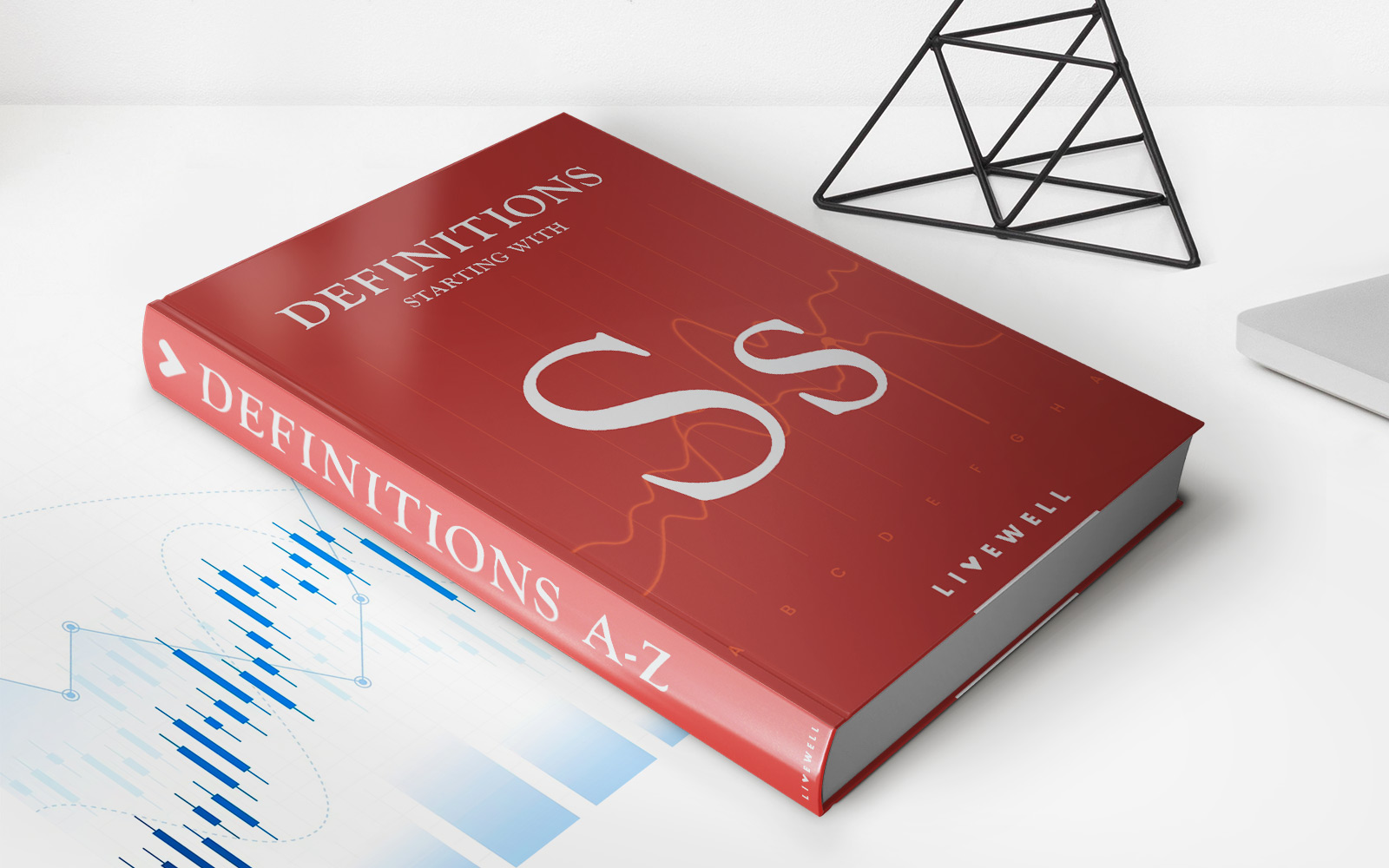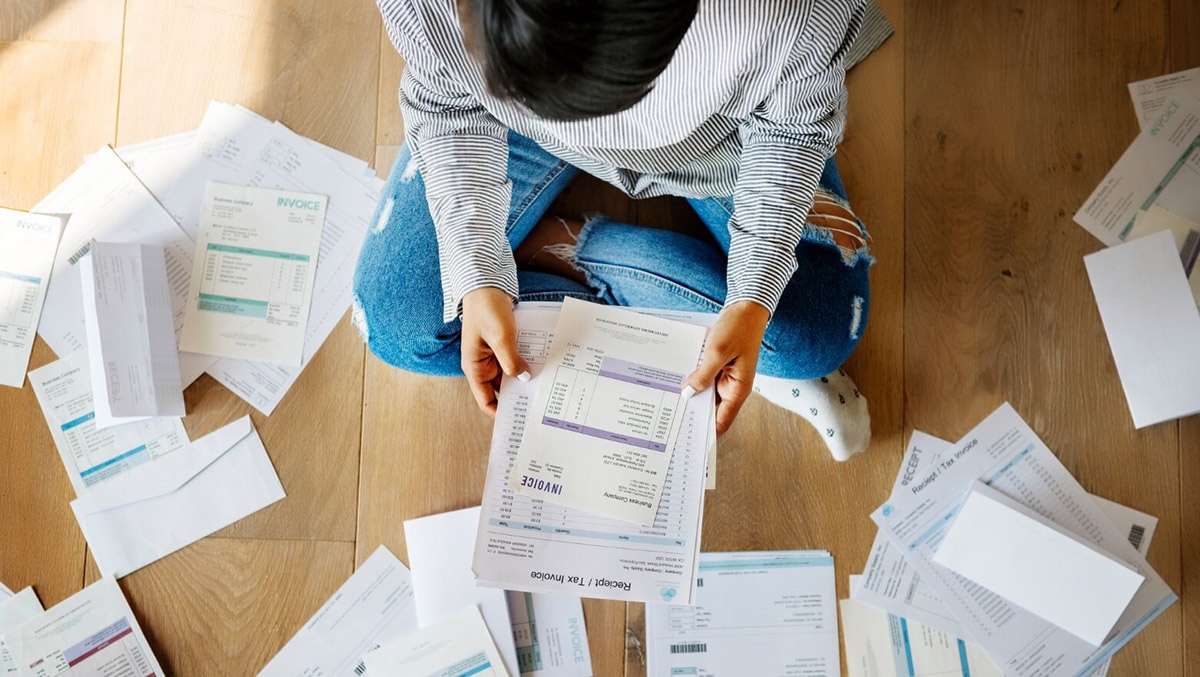Home>Finance>How To Open A Forex Trading Account In South Africa


Finance
How To Open A Forex Trading Account In South Africa
Published: December 22, 2023
Learn how to open a forex trading account in South Africa and start exploring the world of finance. Unlock new opportunities with our step-by-step guide.
(Many of the links in this article redirect to a specific reviewed product. Your purchase of these products through affiliate links helps to generate commission for LiveWell, at no extra cost. Learn more)
Table of Contents
- Introduction
- Step 1: Research Different Forex Brokers
- Step 2: Decide on the Type of Forex Trading Account
- Step 3: Gather Required Documents and Information
- Step 4: Choose a Forex Broker and Sign Up
- Step 5: Verify Your Identity and Address
- Step 6: Fund Your Forex Trading Account
- Step 7: Download and Set Up Trading Platform
- Step 8: Familiarize Yourself with Forex Trading Basics
- Step 9: Start Trading and Monitor Your Account
- Conclusion
Introduction
Forex trading, also known as foreign exchange trading, has gained popularity in South Africa as more individuals look for alternative investment opportunities. With its potential for high returns and 24-hour accessibility, forex trading offers an exciting avenue for individuals seeking to diversify their investment portfolios.
Opening a forex trading account in South Africa is the first step towards participating in the dynamic world of currency trading. Whether you’re a seasoned investor or a beginner, this article will guide you through the process of opening a forex trading account in South Africa.
Before diving into the steps, it’s essential to understand the basics of forex trading. In the forex market, currencies are bought and sold based on their value against other currencies. Traders aim to profit from changes in currency exchange rates by buying low and selling high.
South Africa has a thriving forex market, with numerous reputable forex brokers offering their services to traders. These brokers provide trading platforms that allow individuals to access the forex market and execute trades. However, it’s crucial to choose a reliable and regulated broker to ensure the security of your funds and a transparent trading environment.
In this article, we’ll outline the step-by-step process of opening a forex trading account in South Africa. From researching different forex brokers to funding your account and starting your trading journey, we’ll cover all the essential aspects you need to know.
It’s important to note that forex trading carries risks, and it is recommended that you educate yourself about the market and develop a trading strategy before getting started. Additionally, it’s always advisable to start with a demo account to practice trading with virtual funds before risking your real money.
Now, let’s dive into the specific steps required to open a forex trading account in South Africa.
Step 1: Research Different Forex Brokers
When it comes to opening a forex trading account in South Africa, the first step is to research and compare different forex brokers. With a wide range of brokers available, it’s essential to choose one that aligns with your trading goals and preferences.
Start by conducting thorough research and reading reviews of various forex brokers. Look for brokers that are regulated by reputable authorities such as the Financial Sector Conduct Authority (FSCA) in South Africa. Regulation ensures that the broker operates in compliance with strict guidelines, providing a level of security and assurance for your trading activities.
Consider factors such as trading platforms offered, account types, leverage options, spreads, commissions, customer support, and educational resources. Each broker may have different features and offerings, so it’s important to find one that suits your trading style and needs.
Additionally, take into account the reputation and reliability of the broker. Look for brokers with a track record of excellent customer service and a strong presence in the industry. Check if they have won any awards or accolades, as this can be an indication of their credibility.
One way to narrow down your choices is by seeking recommendations from experienced traders or joining online trading communities where traders share their experiences and insights. This can help you gain valuable insights into the strengths and weaknesses of different brokers.
Furthermore, consider the trading instruments offered by each broker. Some brokers may specialize in specific currency pairs or provide access to a wide range of markets, including commodities, indices, and cryptocurrencies. Assess your trading preferences and the markets you are interested in before making a decision.
It’s also worth considering the trading tools and features provided by each broker. Look for platforms that offer advanced charting tools, technical indicators, and risk management features to enhance your trading experience.
Lastly, don’t forget to compare the fees and costs associated with trading. Different brokers may have varying spreads, commissions, or overnight fees, so it’s important to understand these charges and how they can impact your profitability.
By thoroughly researching and comparing different forex brokers, you can make an informed decision and choose a broker that meets your requirements. Once you have shortlisted a few brokers, it’s time to move on to the next step in opening your forex trading account.
Step 2: Decide on the Type of Forex Trading Account
After researching different forex brokers, the next step in opening a forex trading account in South Africa is deciding on the type of account that suits your trading needs and goals. Forex brokers typically offer different account types to cater to traders with varying experience levels and trading strategies.
Here are some common types of forex trading accounts:
- Standard Account: This is the most basic type of trading account, suitable for beginner traders. It usually requires a minimum deposit and offers standard trading conditions, such as average spreads and leverage.
- Mini Account: A mini account is designed for traders who want to start with smaller capital. It typically has lower minimum deposit requirements and smaller trade sizes.
- Micro Account: Similar to a mini account, a micro account allows traders to trade with even smaller trade sizes. This type of account is ideal for those who want to practice trading with minimal risk.
- ECN Account: An ECN (Electronic Communication Network) account offers direct access to liquidity providers and allows for trading with tighter spreads. This type of account is suitable for advanced traders and scalpers.
- Islamic Account: Islamic accounts are designed for traders who follow Sharia laws, which prohibits earning or paying interest. These accounts operate based on the principle of no interest or swap-free trading.
Consider your trading experience, risk tolerance, and trading strategy when choosing an account type. If you’re new to forex trading, starting with a standard or mini account can be a good option, as they offer more flexible trading conditions.
Additionally, take into account the leverage options offered by each account type. Leverage allows traders to control larger positions with a smaller amount of capital. However, it’s important to use leverage responsibly, as it can amplify both profits and losses.
Some brokers also offer demo accounts, which allow you to practice trading with virtual funds. Demo accounts are a great way to familiarize yourself with the trading platform and test your strategies without risking real money.
As you decide on the type of forex trading account, ensure that the broker offers the account that meets your requirements. Keep in mind that you can always switch account types or open multiple accounts with the same broker in the future, as per your evolving trading needs.
Once you have decided on the type of account, you can proceed to the next step of gathering the required documents and information to open your forex trading account in South Africa.
Step 3: Gather Required Documents and Information
Before opening a forex trading account in South Africa, it’s important to gather the necessary documents and information required by the forex broker. This step ensures a smooth and efficient account opening process.
Here are the common documents and information you may need:
- Identification Documents: Prepare a valid identification document, such as a passport, national ID card, or driver’s license. The broker will require this document to verify your identity.
- Proof of Address: Provide a document that proves your residential address, such as a utility bill, bank statement, or government-issued document. It should clearly display your name and address, which should match the information provided during the account registration process.
- Tax Identification Number (TIN): Some brokers may require your TIN or equivalent tax identification information for compliance purposes.
- Employment and Financial Information: You may need to provide details about your employment, such as your occupation, employer’s name, and income. Additionally, you might be asked to disclose your financial information, including your net worth and investment experience.
- Bank Account Details: Prepare your bank account details, including the bank name, account number, and routing number, as you will need to link your trading account to your bank account for deposits and withdrawals.
It’s crucial to ensure that the information and documents you provide are accurate and up to date. Any discrepancies or inconsistencies may cause delays in the account opening process or result in the rejection of your application.
In addition to the required documents and information, some brokers may ask you to complete a questionnaire or provide additional details regarding your trading experience, investment goals, and risk tolerance. This information helps the broker understand your trading needs and offer appropriate support and guidance.
Take the time to gather all the necessary documents and double-check that everything is in order. This will make the process of opening a forex trading account in South Africa much smoother and more efficient.
Once you have all the required documents and information ready, you can move on to the next step: choosing a forex broker and signing up for your trading account.
Step 4: Choose a Forex Broker and Sign Up
After gathering the necessary documents and information, the next step in opening a forex trading account in South Africa is to choose a reputable forex broker and begin the sign-up process.
Here are the key factors to consider when choosing a forex broker and signing up:
- Regulation and Security: Ensure that the broker is regulated by a reputable financial authority, such as the Financial Sector Conduct Authority (FSCA) in South Africa. Regulation provides a level of security and ensures that the broker operates in compliance with industry standards and regulations.
- Trading Platform: Evaluate the trading platform provided by the broker. Ensure that it is user-friendly, stable, and offers the features and tools you require for your trading activities. Popular trading platforms include MetaTrader 4 (MT4) and MetaTrader 5 (MT5).
- Account Types: Choose the account type that matches your trading needs and preferences, considering factors such as minimum deposit requirements, leverage options, and spreads offered by each account type.
- Deposit and Withdrawal Options: Check the deposit and withdrawal methods offered by the broker. Ensure that they support convenient and secure payment options that align with your preferences.
- Customer Support: Consider the quality and responsiveness of the broker’s customer support. Look for brokers that offer multiple communication channels and provide prompt assistance to resolve any queries or issues.
- Educational Resources: Assess the educational resources provided by the broker. This can include tutorials, webinars, and market analysis tools to help you enhance your trading skills and knowledge.
Once you have chosen a forex broker, visit their website and navigate to the account registration section. Fill in the required information and submit the necessary documents as per their instructions.
During the sign-up process, you may be asked to create a username and password for your trading account. Ensure that you choose a strong password and keep it secure to protect your account from unauthorized access.
Read and understand the terms and conditions, as well as any legal documents provided by the broker, before proceeding with the account registration. It’s important to have a clear understanding of the contractual relationship between you and the broker.
After completing the sign-up process, you will receive a confirmation email from the broker with details about your trading account. Follow the instructions provided to verify your email address and activate your account.
Once your account is activated, you can proceed to the next step: verifying your identity and address.
Choosing the right forex broker is essential for a successful trading journey. Take your time to evaluate your options and make an informed decision that aligns with your trading needs and goals.
Step 5: Verify Your Identity and Address
After signing up for a forex trading account with your chosen broker, the next step is to verify your identity and address. This verification process is required by regulatory authorities to ensure compliance with anti-money laundering (AML) and know-your-customer (KYC) regulations.
Here’s what you need to know about verifying your identity and address:
- Identity Verification: The broker will require you to provide valid identification documents to confirm your identity. This typically includes submitting a copy of your passport, national ID card, or driver’s license. Make sure that the document is clear and legible, with all relevant information visible.
- Address Verification: To verify your address, you will need to provide a document that shows your residential address. This can be a utility bill (electricity, water, or gas), bank statement, rental agreement, or government-issued document. The document should be recent (within the last three months) and clearly display your name and address.
- Verification Process: Each broker may have a slightly different verification process. Typically, you will be asked to upload the necessary documents through a secure portal on their website. Alternatively, you may need to send the documents via email or fax. The broker will review the documents and confirm their authenticity.
- Verification Timeframe: The time it takes to verify your identity and address can vary depending on the broker. Some brokers may complete the verification process within a few hours or days, while others may take longer. Be patient and check with the broker for updates on the status of your verification.
It’s important to note that the verification process is a necessary step to ensure the security and integrity of the trading environment. By verifying your identity and address, the broker is able to establish a trusted relationship with you and minimize the risk of fraudulent activities.
Make sure to carefully follow the instructions provided by the broker for document submission. Ensure that the documents you provide are clear, accurate, and match the information you provided during the account registration process.
If you encounter any issues or have questions during the verification process, reach out to the broker’s customer support for assistance. They will be able to guide you through the process and address any concerns you may have.
Once your identity and address have been successfully verified, you can move on to the next step: funding your forex trading account.
Verification is a crucial step in the account opening process, and it demonstrates your commitment to complying with legal and regulatory requirements. By ensuring prompt and accurate document submission, you can expedite the verification process and start trading sooner.
Step 6: Fund Your Forex Trading Account
Now that your forex trading account is verified, the next step is to fund it. Funding your account is essential as it allows you to have capital to trade with and take advantage of opportunities in the forex market. There are various methods you can use to fund your forex trading account in South Africa.
Here are some common methods for funding your forex trading account:
- Bank Transfers: This is one of the most common and convenient ways to fund your trading account. You can initiate a bank transfer from your personal bank account to the broker’s designated bank account. It’s important to ensure that you include the correct reference number or account details to ensure the funds are credited to the right account.
- Debit/Credit Cards: Many brokers accept debit and credit card payments. You can securely link your card to your trading account and make instant deposits. Visa and Mastercard are widely accepted, but it’s always advisable to check with your broker regarding the specific cards they support.
- Electronic Wallets: E-wallets such as Skrill, Neteller, and PayPal are popular options for funding forex trading accounts. These platforms allow you to securely store and transfer funds, providing a convenient and fast way to deposit money into your trading account.
- Bitcoin and Cryptocurrency: Some brokers also accept Bitcoin and other cryptocurrencies as a form of deposit. If you hold these digital currencies, you can directly transfer them to your trading account.
When choosing a funding method, consider factors such as convenience, transaction fees, and processing times. Each method may have its own associated fees, so it’s important to take this into account when deciding how much to deposit.
Before making a deposit, ensure that you have read and understood the broker’s deposit policies and any associated terms and conditions. Keep in mind that some brokers may require a minimum deposit amount to activate your trading account.
It’s a good practice to start with a small deposit initially, especially if you are new to forex trading. This allows you to test the deposit process and familiarize yourself with the broker’s procedures without risking a significant amount of money.
Once the funds are successfully deposited into your trading account, you can proceed to the next step: downloading and setting up the trading platform.
Remember that funding your forex trading account is an important step in your trading journey. Take the time to choose a funding method that suits your preferences and ensures a secure and hassle-free transfer of funds.
Step 7: Download and Set Up Trading Platform
After funding your forex trading account, the next step is to download and set up the trading platform provided by your chosen broker. The trading platform is the software that allows you to access the forex market, analyze price charts, execute trades, and manage your positions.
Here’s how you can download and set up the trading platform:
- Choose the Trading Platform: Based on the broker you have selected, determine which trading platform they offer. Popular platforms include MetaTrader 4 (MT4) and MetaTrader 5 (MT5). These platforms are widely used and provide a range of features and tools for successful trading.
- Download the Platform: Visit the broker’s website and navigate to the download section for the trading platform. Most brokers provide a direct download link on their website. Click on the link to start the download process.
- Install the Platform: Once the trading platform is downloaded, locate the file on your computer and run the installer. Follow the installation prompts to complete the installation process. Be sure to read and accept the terms and conditions if prompted.
- Login to Your Trading Account: After the installation is complete, launch the trading platform. You will be prompted to enter your login credentials, which include the username and password associated with your trading account. Enter the details provided by your broker to log in.
- Customize the Platform: Once you are logged in, take some time to familiarize yourself with the trading platform. Customize the platform’s layout, adjust chart settings, and add indicators or other visual elements as per your trading preferences. Many trading platforms allow you to save your preferred layout for future use.
- Explore Features and Tools: Spend time exploring the various features and tools available on the trading platform. Familiarize yourself with the order types, charting capabilities, technical indicators, and risk management tools. Take advantage of demo accounts and practice trading to understand how these features work in a risk-free environment.
It’s important to note that trading platforms may vary slightly depending on the broker and the version of the platform you are using. However, the core functionalities remain the same, allowing you to analyze price charts, place trades, and monitor your positions.
Additionally, most trading platforms offer mobile versions for smartphones and tablets, allowing you to trade on the go. You can download these mobile apps from your device’s app store and log in using your trading account credentials.
Once you have downloaded and set up the trading platform, you are ready to move on to the next step: familiarizing yourself with forex trading basics.
Remember to take your time to become comfortable with the trading platform and its features. Understanding how to navigate and utilize the platform effectively will contribute to your success as a forex trader.
Step 8: Familiarize Yourself with Forex Trading Basics
Before you start trading forex, it is crucial to familiarize yourself with the basics of forex trading. Understanding the fundamental concepts and principles will help you make informed trading decisions and manage your risk effectively.
Here are some important forex trading basics to focus on:
- Market Structure: Learn about the structure of the forex market, including the major participants (banks, corporations, central banks) and the role of currency pairs in trading.
- Currency Pairs: Understand how currency pairs are quoted and the significance of the base and quote currency in determining the exchange rate.
- Pip and Lot: Get familiar with the concepts of pip (percentage in point) and lot size. A pip represents the smallest price change in a currency pair, while lot size refers to the volume of a trade.
- Order Types: Learn about the different order types, including market orders, limit orders, stop orders, and stop-loss orders. Each order type serves a specific purpose in executing trades.
- Technical Analysis: Explore the basics of technical analysis, which involves analyzing price charts, trends, support and resistance levels, and indicators. Technical analysis helps identify potential trading opportunities.
- Fundamental Analysis: Understand the role of fundamental analysis in forex trading. This involves analyzing economic indicators, news events, and geopolitical factors that can impact currency values.
- Risk Management: Learn the importance of risk management and how to calculate the risk-to-reward ratio. Implement risk management strategies such as setting stop-loss orders and managing position sizes to protect your capital.
- Trading Psychology: Recognize the role of psychology in trading and develop a mindset that allows you to remain disciplined and not let emotions dictate your trading decisions.
- Keep Learning: Continuous learning is essential in forex trading. Stay updated with market news and trends, read books, watch educational videos, and consider attending webinars or workshops to enhance your knowledge and skills.
Demo accounts provided by brokers are a valuable tool to practice trading strategies and apply the knowledge gained. Utilize the demo account to gain hands-on experience while minimizing risks before trading with real money.
Remember, forex trading involves risks, and it is important to approach it with a well-informed mindset. Take the time to absorb the basics and gradually build your expertise to become a successful forex trader.
Once you are comfortable with the forex trading basics, you can move on to the final step: starting to trade and monitoring your forex trading account.
Step 9: Start Trading and Monitor Your Account
After you have familiarized yourself with the basics of forex trading, it’s time to start trading and monitor your forex trading account. This step involves executing trades, monitoring market conditions, and managing your positions to maximize your trading opportunities.
Here are some key points to consider when starting to trade and monitoring your account:
- Analyze the Market: Before entering any trades, analyze the market using your preferred method of analysis, whether it’s technical analysis, fundamental analysis, or a combination of both. Look for potential entry and exit points based on your trading strategy.
- Execute Trades: Once you have identified a trading opportunity, use the trading platform to execute your trades. Select the appropriate order type, specify the volume or lot size, set stop-loss and take-profit levels, and confirm the trade execution.
- Monitor Trades: Keep a close eye on your open trades. Monitor market conditions, price movements, and any relevant news or events that may impact your positions. Be prepared to make adjustments or exit trades if market conditions change or your trading strategy calls for it.
- Implement Risk Management: Always prioritize risk management. Set appropriate stop-loss levels to limit potential losses and utilize trailing stops to lock in profits as the trade moves in your favor. Adjust your position sizes based on your risk tolerance and the size of your trading account.
- Keep a Trading Journal: Maintain a trading journal to record your trades, including entry and exit points, the rationale behind each trade, and the outcome. This will help you evaluate your trading performance, identify patterns, and make improvements to your trading strategy over time.
- Stay Updated: Stay informed about market news, economic releases, and events that can impact the forex market. Follow reputable financial news sources and calendar events to ensure you have relevant information that may affect your trading decisions.
- Review and Reflect: Regularly review and evaluate your trading performance. Assess the effectiveness of your trading strategy, identify any weaknesses or areas for improvement, and make necessary adjustments to refine your approach.
- Seek Continuous Learning: Forex trading is a dynamic field, and there is always more to learn. Engage in ongoing education, read trading books, attend webinars or workshops, and stay connected to the trading community to expand your knowledge and skills.
It is important to maintain discipline, patience, and consistency in your trading activities. Avoid making impulsive decisions based on emotions or short-term market fluctuations. Stick to your trading strategy, and remember that successful trading is a long-term journey.
Regularly monitor your forex trading account balance, equity, and overall performance. Adjust your trading approach as needed to optimize your results and achieve your financial goals.
By following these steps and actively monitoring your trades, you will gradually gain experience and develop your skills as a forex trader. Remember that consistency, discipline, and continuous learning are key to long-term success in the forex market.
Finally, remember to enjoy the journey and the learning process. Happy trading!
Conclusion
Opening a forex trading account in South Africa can be an exciting and rewarding endeavor, providing opportunities to participate in the global currency market. By following the step-by-step process outlined in this guide, you can navigate the account opening process with confidence and start your forex trading journey on the right track.
We began by emphasizing the importance of researching different forex brokers to ensure you choose a reputable and regulated broker that aligns with your trading goals. Then, we discussed the significance of deciding on the type of forex trading account that suits your experience level and preferences.
Gathering the necessary documents and information, including identification and proof of address, is crucial to a smooth account opening process. Make sure to double-check the accuracy of the information provided to avoid any delays or issues.
Once you have chosen a forex broker and completed the account sign-up process, verify your identity and address to comply with regulatory requirements. This step enhances the security and credibility of your trading account.
After funding your forex trading account, download and set up the trading platform provided by your broker. Familiarize yourself with the platform’s features and tools, customizing it to suit your trading style and preferences.
Invest time in understanding the basics of forex trading, including market structure, currency pairs, order types, and different forms of analysis. Develop a solid risk management strategy and cultivate a disciplined trading mindset to protect your capital.
Finally, as you start trading and monitoring your forex trading account, consistently analyze the market, execute trades based on your strategy, and monitor your positions. Regularly review your trading performance, seek continuous learning, and stay updated with market news and events that can impact your trades.
Remember that forex trading involves risks, and success is not guaranteed. It takes time, effort, and continuous learning to become a skilled and profitable trader. Patience, discipline, and risk management are key elements of a successful trading journey.
By following the steps outlined in this guide and committing to continuous improvement, you can embark on a rewarding forex trading experience in South Africa. Stay informed, remain adaptable, and embrace the challenges and opportunities that come with trading the dynamic and ever-changing forex markets.
